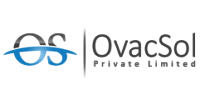How HRMS Streamlines Recruitment and Onboarding
HR recruits and ensures that new employees integrate well within the company in today’s competitive job market. Traditional recruitment methods consumed a lot of time, had high chances of errors, and efficiency of modern business requirements was always lacking in traditional methods. But now with the implementation of an HR Management System (HRMS), companies are able to reduce redundancies within the recruitment and onboarding processes, thus bettering their experiences and interactions with the prospective employees.
In this piece, we will look at how HRMS can change the game in recruitment and onboarding by learning what parts of employment require automation, improving communication, and providing insights along the way.
What is HRMS?
HRMS has full knowledge of all the human resources that are available within an organization while simultaneously having the capability of storing relevant data in an efficient manner. Some common examples include Taleo, Namely and Adp that aid in recruitment, self-service tools and management processes – payroll administration, et cetra. A common example would include capturing documents relevant to an employee along with their biography and contact information, their background check and educational history, which all can be automated in order to minimize difficulties that HR managers currently potentially encounter.
One of the most significant advantages of HRMS is its capability of enhancing the recruitment and simulation processes by offloading the administrative challenges onto the system, enabling a more pleasant experience for both the hiring managers and new employees.
How HRMS Enhances Recruiting Processes
Recruitment is one of the most time consuming and resource demanding HR functions. By implementing HRMS systems, organizations can reduce a number of the manual steps that are required in hiring processes such as HR decision making that is more strategic than administrative routines.

Streamlining recruitment and onboarding with HRMS technology.
Accessible Databases for Candidates.
As a result of HRMS system capabilities, organizations can record and store all candidate data in a centralized location. Indeed, cover letters, resumes, interview findings and even candidate performance opinions are collected in the online system. This improves accessibility and retrieval of candidate information, helping HR teams find potential hires faster. Search engines and filters help eliminate irrelevant resumes, focusing on the best candidates.
Posting of Vacancies without Manual Intervention.
On many occasions, an HRMS has incorporated job posting capabilities that allow employers to post their hiring needs on various websites, social networks, and other online or company platforms. This enables HR to easily post positions across multiple platforms, increasing candidate reach, while tracking sources to identify the best channels for attracting top talent.
Applicant Tracking
An HRMS’s recruitment workflow is one of the most difficult but imperative aspects; however, thanks to technology that is now easier with an ATS. The American Thoracic Society tracks candidates through screening, interviews, and selection, helping HR stay organized and avoid duplication.
Automated Candidate Screening
An HRMS also allows coworkers to speed up the hiring process faster since many HRMS platforms have screening capabilities built in. These automation tools can be designed in a way that would fit the specifics of the particular role. For instance, systems using HRMS can perform automatic CV databases screening based on certain expectations of experience or skills. More such HRMS solutions may also provide AI-based technologies, which evaluate candidates based on their responses to brief introductory questionnaires so that HR managers do not have to do that.
Streamlined Interview Management
Scheduling interviews might arguably be the most boring and frustrating stage in the recruitment process. The majority of HRMS have the ability to connect to calendars and scheduling applications for easier scheduling of interviews. Candidates can select their most convenient time, and the system automatically sends the interview invite and notice to both the candidate and the interviewer. This avoids scheduling problems as well as reducing the likelihood of clients missing appointments, addressing the aspect of candidates’ experience.
Multi-perspective Collaboration and Inputs
HRMS systems also allow multiple users access and participate in the recruitment process. Collective note-taking, evaluation, and rating of candidates during interviews enable the HR team to evaluate candidates simultaneously, minimizing the time required to agree on candidates to advance. The system collects comments from hiring managers and team members, incorporating all feedback into the decision-making process.
Key Performance Indicators Driven Viewpoints
An HRMS provides analytics and reports to help organizations measure key recruitment metrics, such as time to fill a vacancy, cost per hire, and candidate source. These measurements help HR identify gaps, improve recruitment, and strategize for future hiring.
How HRMS Enhances the Onboarding Experience
Onboarding is a crucial step as it will determine the view of any employee when joining the organization. Effective onboarding makes new hires feel welcomed, engaged, and excited about their work. Several steps of onboarding can be simplified and made efficient with the use of an HRMS. Moreover, the HRMS reduces human errors due to its automation features.
Digital Document Retention
HRMS platforms such as Neeyamo can respond to the situation when employees submit and manage all the required paperwork electronically using the same systems. Such documents may include tax forms, non-disclosures and benefit enrollment forms. There’s no physical paperwork to be handled and organization of documents incase of audits is easy.
Preparing the Employee for Onboarding
The integration and orientation process actually starts long before an employee’s official first day in the company. HR teams can use the HRMS to assign pre-boarding tasks, such as welcome letters, policy briefings, and training materials. This helps new employees feel less anxious about the role when they begin.
Onboarding Workflow Automation
HRMS solutions typically include automation features, such as customizable onboarding workflows for new hires to follow. Each automated workflow ensures that the new hires complete all steps, from signing necessary documents to finishing orientation training. HR professionals can monitor all activities in real-time to ensure new hires complete their tasks within the acceptable time frame.
Employee Self-Service Portal
HRMS also provides new employees with a self-service portal that allows them to accomplish tasks such as personal details updates, benefits selection, and training schedules on their own. The portal self-service feature increases new employees’ participation and minimizes the administrative workload on the human resources teams. It also promotes a sense of self-dependency and control in the onboarding process for new employees.
Training and Development
Several HRMS solutions have an inbuilt learning management system (LMS) that enables new employees to utilize training modules, get certifications, and monitor how much they have learned. Respondents reported that 40 to 90 percent of employees undergo onboarding training, which they consider crucial for preparing new hires. An HRMS can also improve access to critical training content, boosting knowledge and skill development.
Employee Engagement and Feedback
Engagement can be promoted during the onboarding phase through an HRMS by collecting feedback from new employees. As the new hire progresses, the system automatically sends surveys and organizes focus groups to assess their progress. Managers can use feedback to adjust the organization of new employees and improve features for future hires.
Effective Scaffolding with Other HR Functions
While a new employee’s onboarding period may appear to encompass some brief days or weeks, it does not cease there. “Jeremy developed an HR software system that links key HR functions—onboarding, performance, pay, and benefits. It helps organizations focus on new hires, ensuring they quickly transition to their regular responsibilities.”
Advantages of Reduced Recruitment and Onboarding Time Periods
Some of the critical benefits that an HRMS offers to the organization include the following:
- Reduced time-to-hire: Because of the automation tools implanted into the recruitment process, the time in hiring new staff gets considerably short.
- Clear communication and prompt follow-ups improve candidates’ experience and create a positive view of the employer.
- Automation of tasks like document preparation, time management, and applicant screening allows HR to focus on strategy.
- Digitalized data storage minimizes errors by maintaining up-to-date information in candidate and employer databases.
- Automation reduces legal issues by ensuring all documentation and legal requirements are properly available, preventing noncompliance.
- Efficient and engaging job orientation makes new employees feel appreciated, increasing their likelihood of staying long-term.
FAQs:
In what ways HRMS enhance candidates experience?
HRMS enhances candidate experience through an easy to understand application process, timely responses and communication, and feedback. With automated calendars and alerts, HR creates a low margin of error giving the candidate respect throughout the process.
Is it possible for HRMS to execute pre-hire activities?
Yes, HRMS systems can perform such pre-hire activities as sending welcome emails, completing forms, or provide materials in advance. This way the new employee can be set up even prior to the first day’s commencement.
What are the other HR functions also covered when HRMS is applied?
An HRMS integrates with various HR functions such as payroll, performance management, and employee benefits, creating a cohesive HR ecosystem that allows for a seamless transition for newbies.
Are HRMS applicable for other recruitment purposes without limitations?
Yes, most HRMS platforms are highly flexible. HR teams are able to create unique workflows, interview protocols, and candidate assessment methods that meet the requirements of the organization.




